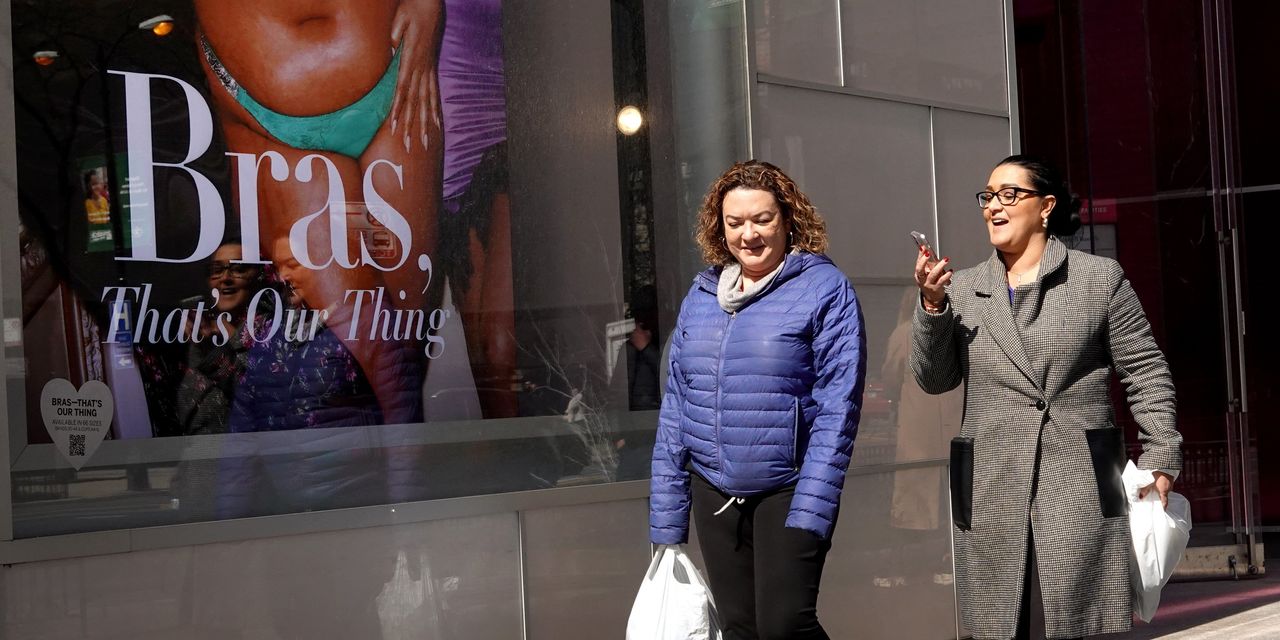It wasn’t the relatively small size of the rebound in April’s U.S. retail sales report that captured the market’s attention on Tuesday, as much as the rebound itself.
After data showed sales at U.S. retailers rose by just 0.4% last month, below the 0.8% rise expected by economists, traders ran with it, focusing on the fact that sales didn’t decline as they had in four of the five months prior to April. Other data released on Tuesday showed industrial production rose by a better-than-expected 0.5% in April after two flat months, and builder confidence rose in May for the fifth consecutive month amid an continuing shortage of U.S. homes for sale.
Yields on two-month through 30-year government debt all rose on Tuesday, buttressed by the possibility that inflation pressures may have more room to run. Traders nudged up the likelihood of another quarter-of-a-percentage-point interest rate hike by the Federal Reserve in June, to up to 30% before settling around 23%. And economists, analysts and traders wondered about a non-basecase scenario in which the economy doesn’t fall into a recession as easily as many people think.
Read: Why 5% interest rates might not derail the stock market or the U.S. economy
“Though interest rates are above 5%, we are not seeing the same sort of cracking that we would normally see in the economy,” said Lawrence Gillum, the Charlotte, N.C.-based chief fixed income strategist at LPL Financial. “We haven’t seen default rates for corporations go up, and consumer delinquencies are below long-term averages. Businesses and households can still pay their bills.”
In addition, there’s still plenty of demand for workers, with the labor market continuing to hold up, Gillum said via phone. That all adds up to a 25%-30% chance of a scenario in which the economy simply “muddles through”, with some sectors, like manufacturing, in danger of a recession and others, such as services, doing fine. However, LPL Financial sees a 60%-65% chance of a recession in the second half of this year, he said.
Recession worries were back in focus on Tuesday after Treasury Secretary Janet Yellen said that a U.S. default on government-debt could trigger an economic downturn. On Monday, Federal Reserve Bank of Atlanta President Raphael Bostic told CNBC that he doesn’t foresee interest rate cuts at least through 2023, even if there’s a recession — which didn’t stop fed funds futures traders from pricing in rate cuts anyway.
Inflation was the No. 1 game-changer to arise from the Covid-19 pandemic, undoing an era of low interest rates and upsetting financial markets over much of last year. It continues to prove durable despite an annual headline rate from the consumer-price index that’s below 5% for the first time in two years, and even after the Federal Reserve has been hiking rates since March 2022.
What’s less-talked about is whether another powerful byproduct of the pandemic is an unexpectedly stronger U.S. economy — one that’s less sensitive to higher interest rates and less prone to contracting.
The pandemic may have produced a “survival of the strongest” environment in which the “most resilient companies are left standing,” said Derek Tang, an economist at Monetary Policy Analytics in Washington. As businesses and households “build up their defenses against extreme outcomes,” neither inflation nor consumption come down as much as one would expect.
One example of unexpected strength is being seen in housing, where many homeowners locked into previous low interest rates aren’t selling their homes, crimping the supply of properties available to new buyers and keeping prices high.
“You can get a lot of recessionary indicators flashing, but they are based on a history of how the economy typically behaves. And it’s possible to get, say, a manufacturing recession, but not a general recession,” Tang said via phone.
While his firm’s basecase view still calls for a recession this year, Tang said a “muddling-through” scenario could be good for stocks if the strongest companies are seen as grabbing greater market share. But such a scenario would produce “a lot of volatility in the rates markets as the Fed stops and goes on a choppy path toward not higher-for-longer, but just higher, rates.”
In Gillum’s view, equity markets can perform well in a resilient-economic scenario, as long as inflation falls back toward 2% fast enough to suggest that the Fed’s work is done. However, markets would perform less well in a “not-ideal outcome” of stagflation, in which yields would have to rise to reflect continued inflation pressures and the possibility of more Fed rate hikes.
After Tuesday’s retail-sales data, Treasury yields advanced, with the 30-year rate
TMUBMUSD30Y,
climbing to its highest level since March. Traders and investors looked past debt-ceiling issues by buying the 1-month Treasury bill
TMUBMUSD01M,
Meanwhile, all three major U.S. stock indexes
DJIA,
SPX,
COMP,
finished lower.
Read the full article here


